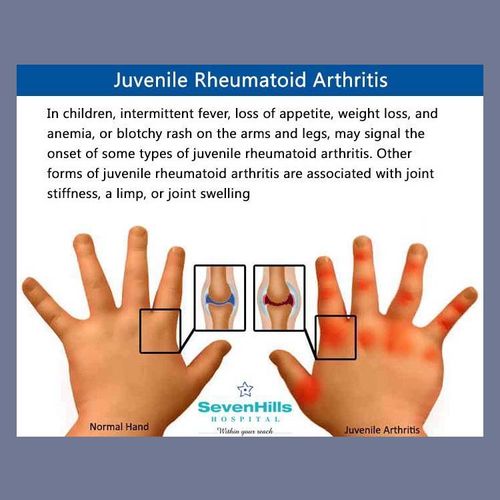Children who have juvenile rheumatoid arthritis (RA) now have a new oral treatment option that may be able to help control their symptoms.
The Study
Lead researcher, Dr. Earl Silverman, a rheumatologist at the University of Toronto Hospital for Sick Children, studied nearly 100 children between ages 3 and 17 who had juvenile rheumatoid arthritis. They were randomly assigned to receive either oral methotrexate, the gold standard of treatment, or oral leflunomide, used in adult RA.
To assess the efficacy of the drugs, the researchers used the American College of Rheumatology's (ACR) Pedi 30, which they use to measure improvement in pediatric RA patients. The ACR Pedi 30 looks for at least a 30% improvement in at least three of six variables: swollen joints, the number of joints with active arthritis, parent assessment of disease, physician assessment of disease, laboratory findings and patient or parent assessment of physical function. Additionally, Silverman says the ACR Pedi 30 also looks for no more than a 30% worsening in any one of the six variables.
After 16 weeks of treatment, 89% of the children in the methotrexate group scored positively on the ACR Pedi 30 compared with 68% in the leflunomide group. The trial continued for an additional 32 weeks and the improvements that were seen at 16 weeks were still maintained at 48 weeks.
Although oral methotrexate is more effective and remains the drug of choice, leflunomide is sometimes better tolerated by children, says Silverman.
"We had a very high response rate in both groups, and both performed better than we had predicted," he says. "We now have an oral alternative therapy [leflunomide] for children...who are intolerant or unresponsive to methotrexate."
The Impact
Silverman says methotrexate is the current front-line treatment for juvenile RA. But if oral methotrexate is not effective, doctors might use methotrexate injections or turn to a "biologic agent," such as etanercept.
Some children can't tolerate methotrexate, leaving them even fewer options for controlling their painful symptoms, says Dr. Patience White, chief public health officer for the Arthritis Foundation. And, even more so than adults, children don't like getting shots. Adults have more options, including leflunomide, which has been shown to be a safe and effective therapy in older patients, according to the researchers. An early trial of leflunomide in children showed a significant response, which prompted the current study comparing leflunomide with methotrexate.
Kids and Arthritis
Nearly 300,000 children in the United States have some form of arthritis or rheumatic disease. While these conditions can make movement painful, in the long run, inactivity creates more pain.
Kids who have arthritis need to make exercise part of their daily routine, whether it's walking the dog or walking to the school bus stop. But before your child starts exercising, he or she needs to remember these tips from the Arthritis Foundation...
- Warm up and cool down.
- Don't do exercises on a bed or any other soft surface.
- Do each exercise slowly and smoothly.
- Repeat each exercise at least three or four times.
- Stop if pain is felt two hours after exercising, and rest for a day or two. When starting again, reduce the number of exercises and see if that helps.
- Try moving to music. Ask some friends to join in.
- Reward yourself after you reach your exercise goal for the day.
- Check with a doctor to see if the exercises are right for you.
- Keep an exercise diary to monitor your progress at the end of each month.
- Always focus on what you can do, not on what you can't do.
'Gene-Silencing’ May Block Fatal Disease
French researchers have developed a technique that silences a mutated gene that is responsible for some cases of amyotrophic lateral sclerosis (ALS), a fatal disease.
Although most cases of ALS have no identifiable cause, some can be attributed to any of 100 mutations in this gene.
The Technique
In research with mice, the gene technique—called RNA interference—significantly delayed the onset and progression of ALS, also known as Lou Gehrig's disease.
At the same time, the researchers were able to deliver a normal, healthy version of the gene to the cells where it was needed.
"This is the first proof of principle in the human form of a disease of the nervous system in which you can silence the gene and, at the same time, produce another normal form of the protein," says study co-author Patrick Aebischer, president of the Ecole Polytechnique Federale de Lausanne.
Approximately 5,000 Americans are diagnosed each year with ALS, a progressive neurological disease that destroys the motor neurons that control muscles.
ALS patients experience gradual paralysis and eventually lose all motor function, leaving them unable to speak, swallow or breathe.
